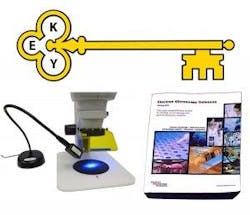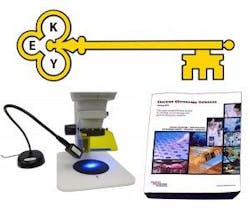NIGHTSEA and EMS launch fluorescence microscopy award for new lab setups
Recognizing that fluorescence microscopy equipment can be very expensive and often out of the reach of young faculty members setting up their first labs, stereomicroscopy accessory maker NIGHTSEA (Lexington, MA) partnered with microscopy accessories supplier EMS-Diatome (Hatfield, PA) to launch the KEY Award. The winner of this award, now in its second year, will receive a NIGHTSEA Stereo Microscope Fluorescence Adapter system with two excitation/emission combinations, plus $750 in equipment or supplies selected from the full EMS catalog to help establish his/her first lab.
The KEY Award is open to individuals entering their first faculty position at a U.S. (including U. S. territories) non-profit college or university in calendar year 2016. The deadline for application is June 3, 2016, with the winner being announced August 1, 2016. Equipment will be sent to the awardee at their new institution.
Last year's winner, Dr. Robert Mitchell, now at the University of Wisconsin Oshkosh, uses his NIGHTSEA system to confirm the presence of fluorescence in his samples before making the 100-mile trip to the University of Wisconsin Madison to use their confocal microscope.
The KEY award acknowledges the mentors who had a profound impact on NIGHTSEA founder and president Dr. Charles Mazel’s own R&D career:
'K': Dr. Les Kaufman, Professor of Biology at Boston University;
'E': Dr. Harold E. 'Doc' Edgerton of MIT and Dr. Thomas Eisner of Cornell University; and
'Y': The remarkable husband and wife team of Drs. Charlie and Clarice Yentsch.
For further details on the award itself, please visit http://bit.ly/key-award.

